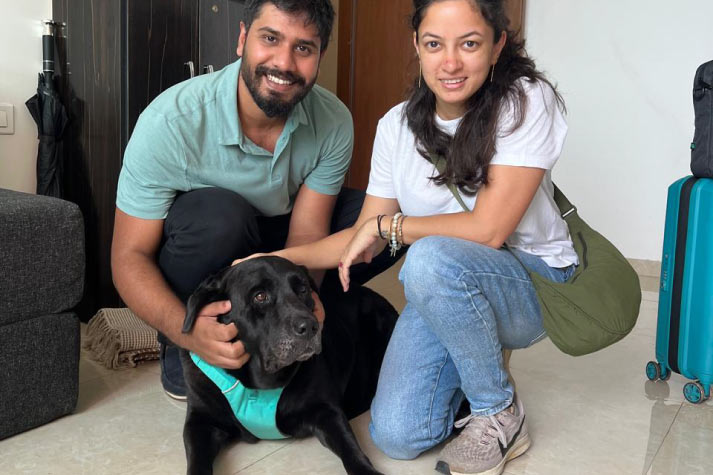
18 Nov
Traveling with Your Labrador: A Guide for Safe and Fun Journeys
Labradors are affectionate, charming, and loyal dogs. Such qualities have made them one of the most popular dog breeds worldwide. Whether you're traveling by car, plane, or any other means, taking your labrador along can be a rewarding experience if done safely. Here's how to ensure your journey is smooth, safe, and enjoyable for both you and your lab.
Domestic Pet Travel with Your Labrador
Road Trips with Your Labrador
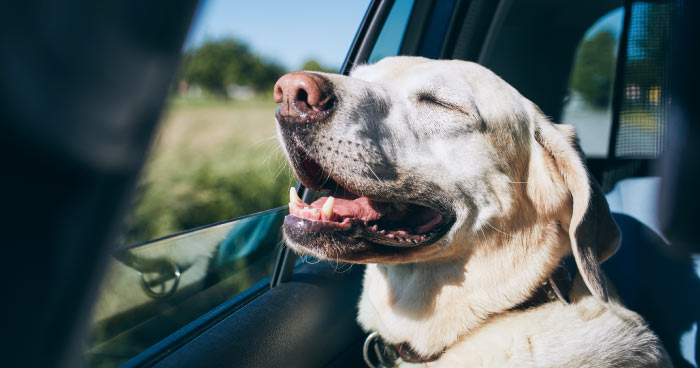
When traveling by car, it’s common to see dogs enjoying the scenery through the open window. However, letting them hang out of the window can be dangerous.
Here’s how to keep your Labrador safe on the road:
- Pre-trip snack: Give your Labrador a light snack before starting your journey to help avoid motion sickness. Offer the rest of their meal with a treat or two once you arrive.
- Use a seat belt or harness: Secure your Labrador with a dog seat belt or a harness designed to keep them safely in one spot. An unsecured pet in a car can be dangerous when driving.
- Buy pet carriers or safety sitters: Such products provide extra security by connecting to the car’s seatbelt, preventing your Labrador from being thrown forward or jerked around during sudden stops.
- Try a backseat barrier: For dogs who love to explore, a soft cloth barrier can be placed between the front and back seats. This stops your Labrador from jumping into the front seat and provides a safe, secure area in the back.
- Doggie goggles: Protect your Labrador ’s eyes from sun and debris with a pair of dog sunglasses, which also look adorable!
- Natural calming aids: If your Labrador seems anxious, consider a calming solution, like flower essence sprays, to reduce stress.
- Car booster seat: For small Labradors, a booster seat lets them look out the window while staying secure in a cushioned spot.
- Never leave your dog unattended: Leaving your Labrador in a parked car, especially in hot weather, can be dangerous due to rapid overheating. There’s also the risk of theft.
Train Travel with Your Labrador
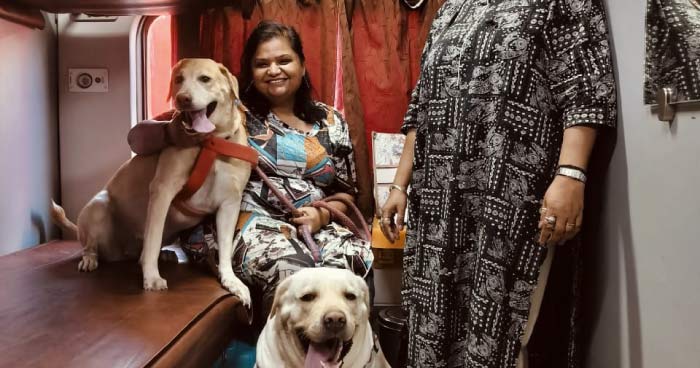
To relocate your lab via railways, you need to book a compartment for them. Indian Railways only allows pet parents to travel with their pets in a first-class A/C coach. You will need to visit a station master and book an entire compartment for the two (or more) of you. As a rule, you should always accompany your pet while travelling in a carriage as their owner. If you are unable to, ensure that someone you trust can do this in your absence.
Pet transportation by train is an excellent alternative to roadways or airways. Railways are economical, comfortable, and have minimal documentation requirements. Since some pet parents are anxious about being separated from their pet for extended periods, it is a good option that allows you to stay alongside your pet. It is also a viable option for elderly pets, who require gentler travel experience. If your priority is comfort instead of speed, choose rail transport.
A few weeks before your journey, acclimatize your pet for travelling. Crate train your pet and get them used to being inside a pet crate while travelling. For longer-distance travel, plan your stops and check to see which station has the longest stop time so your lab can stretch their legs between trips.
Pet travel by train requires only two documents:
- Vaccination Record
- Veterinary Health Certificate
Air Travel with Your Labrador
If you’re flying with your Labrador, it’s usually for a family trip, a dog show, or a move. Flying can be stressful for pets, so consider if it’s necessary or if driving might be a better option. Here’s what to know:
- Cabin or cargo: Small labs may be allowed in the cabin if they fit into a pet carrier that meets the airline’s size requirements. Larger labradors typically have to travel in the cargo hold.
- Carrier guidelines: Your dog should be able to stand and turn comfortably in the carrier. They should be at least 8 weeks old and in good health, with a vet certificate if required by the airline.
- Cargo travel: In the cargo area, dogs are kept in a pressurized and temperature-controlled space. Though safe, this can still be stressful for pets, especially with weather changes.
- Health certificate and insurance: Airlines may ask for a vet’s certificate and suggest pet insurance for added safety.
- Avoid sedation: Most vets advise against sedating pets for flights as it can cause health risks at high altitudes.
- Consider alternatives: Pet-friendly charter flights or pet shuttle services are great options if regular airlines aren’t ideal. While charters are expensive, shuttle services drive your pet safely to the destination.
Essential Travel Tips
- Containment: In cars, keep your Labrador in the back with a barrier or harness, or in a portable kennel. Make sure they’re used to the kennel if you’re planning to travel this way.
- Supplies: Pack essentials like food, water, medicines, leash, collar, and a few toys.
- Identification: Bring ID tags or documents with your contact information.
- Check airline rules: Different airlines have different pet policies, so research well in advance.
- Frozen water for flights: Freeze water in a container and place it in the carrier so your Labrador can stay hydrated as it melts.
International Pet Travel with Your Labrador
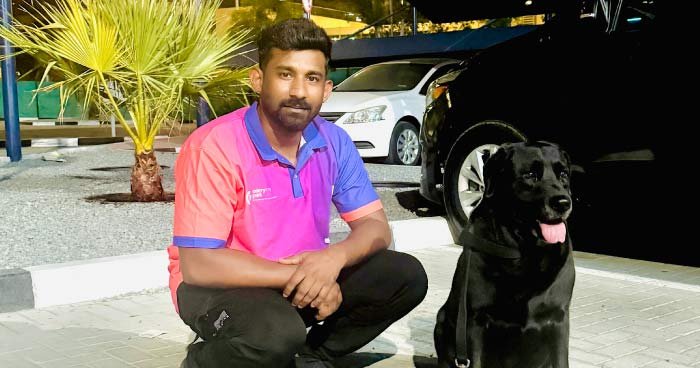
International travel is almost always done through airways, given that these are the fastest mode of transport for international travel. International travel does require a certain level of preparation though, so be prepared.
Microchipping and Rabies Vaccination
Your pet must have a microchip before or at the same time as their rabies vaccination. Such a microchip contains a Unique Identification Number (UIN) linked to the national pet database, which stores contact information and your pet’s medical records. Microchips are standardized, and the ISO 11784/11785 compliant chips are accepted in all countries as a form of identification for your pet. Make sure the microchip is implanted at the right time, otherwise you will need to repeat the rabies vaccination.
Your pet must be up to date on their core vaccinations. Some countries require vaccinations while others don’t, but it is a good idea to get your lab the core group of vaccines before travelling for their safety. These include rabies and DHPPi (for dogs).The rabies vaccination must be given after microchipping is complete, at least 30 days before departure but within the validity period of one year from the given date.
Your pet’s vaccination record is an important document. Your pet’s vaccination record should include:
- Pet’s date of birth
- Microchip number and installation date
- Microchip location on the pet’s body
- Vaccination date, vaccine manufacturer, product name (with sticker), and batch number
- Vaccine manufacture and expiry dates
- Vet’s signature
- Pet parent’s contact details
Rabies Titer Test
Since India is a high-rabies country, pet dogs and cats require a rabies serology titer test from an approved laboratory to enter various countries. A Rabies serology Titer Test checks if your pet has enough antibodies from the rabies vaccine. Check your destination’s import laws to see if your labrador requires a rabies titer test.
Health Certificate
A licensed vet must examine your pet and issue a health certificate stating your pet is fit for traveling and disease-free within seven days of departure. An international health certificate must also be obtained from a vet before you can leave India with your pet.
Export Permit from India
The Animal Quarantine and Certification Service (AQCS) is responsible for providing the export NOC (no objection certificate) in India. This export permit can be obtained from the AQCS’s office and should be obtained at least a week before the date of travel.
Final Thoughts
With these safety tips and proper preparation, you and your Labrador can enjoy a worry-free adventure. Traveling with a pet can be a wonderful bonding experience—so go out, have fun, and make great memories together.

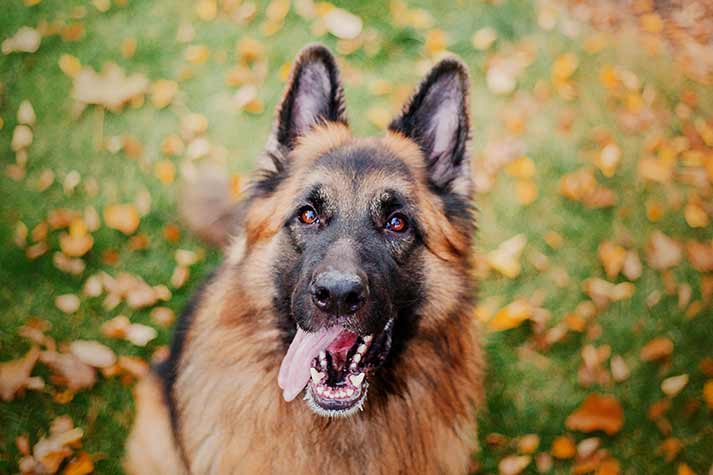

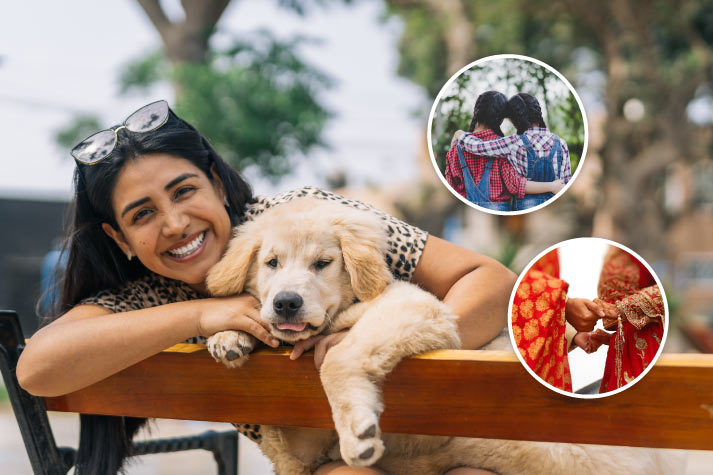


AUTHOR’S BIO
Carry My Pet
Passionate pet enthusiasts and globetrotters, dedicated to easing furry friends' journeys worldwide. Penning tales of compassion at CarryMyPet, where every relocation is a tail-wagging adventure.